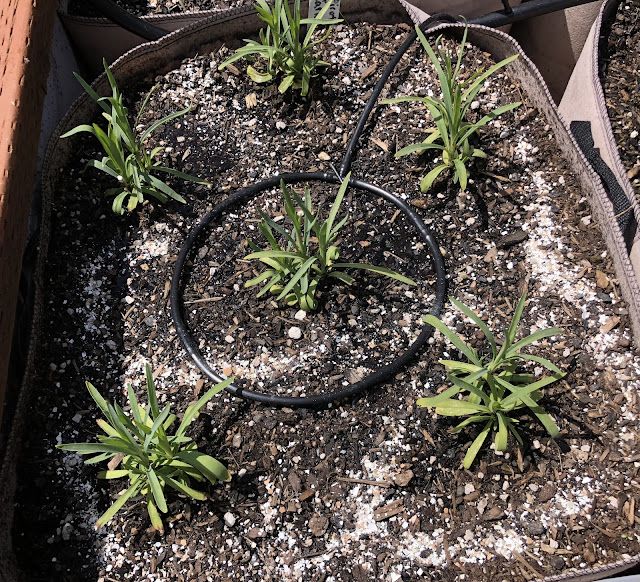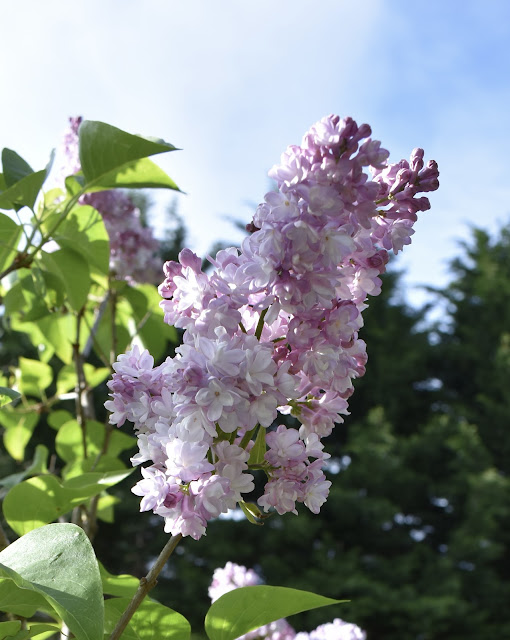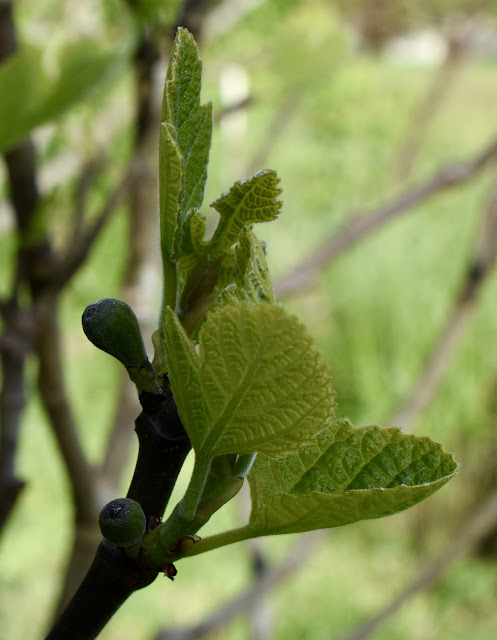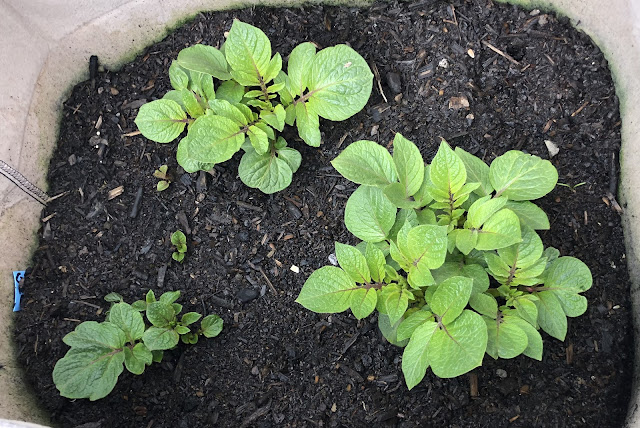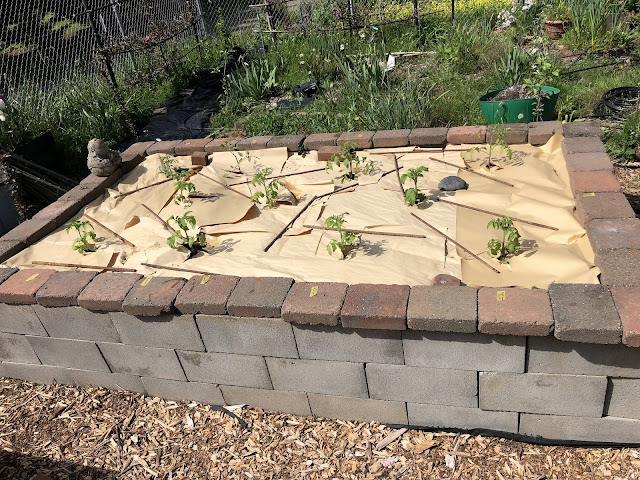Here are some photos of the meditation garden, also called the deer park garden because deer cone through here. zit's sort of the blue season there, mostly Camassia and a few Hiacinthoides.
In addition to the fig trees that were already there, off the top of my head here are some of the established plants that I moved there over the past few months -
About a dozen big Camassia clumps.
Several clumps of Hyacinthoides
2 clumps of Crocosmia "Lucifer"
Several divisions of Horseradish.
4 divisions of rhubarb.
A half dozen large rosemary plants, but I think only 2 or 3 are surviving.
About a dozen sage plants.
About a dozen lavender bushes
Three Itoh peonies
Three clumps of Leucojum (large snowdrops).
About 5 daylilies (Transplanted two today).
Several divisions of lamb's ears.
A big helleborus.
A dozen sedums.
About a dozen forsythias that I started, closer to the fence, eventually for more privacy.
I'm sure I've forgotten some things.
Of new perennial starts from seeds, I've planted several six packs of Rudbeckias, two six packs of Coreopsis, a six pack of Gallardia, A six pack of Ratibida, six packs of common milkweed, tropical milkweed, four O'Clocks, echinacea, carnations, and some statice (I think the statice will be annual, maybe the carnations too). I'm sure I've forgotten some things there too.
This summer I'd like to dig up some batches of spring bulbs that are abandoned around the yard, and plant those too.
I still have some room for summer annuals, which will be zinnias, lots of marigolds, cosmos, cleome. I out up the beginning of a privacy trellis for Morning Glories, which I already planted and growing, and sweetpeas which are already growing.
The common themes for everything, are drought tolerance, not appetizing to deer, adapted to this climate, and something to attract lots of bees and other pollinators. I already know the established plants that I moved fit those criteria, because they are from this yard and grow happily here already. if deer do eat something, I wont mind and I wont add to my efforts to protect it. As for watering, I might do some minimally to get things established, but all of the established plants already proved themselves during the past dry seasons anyway.



